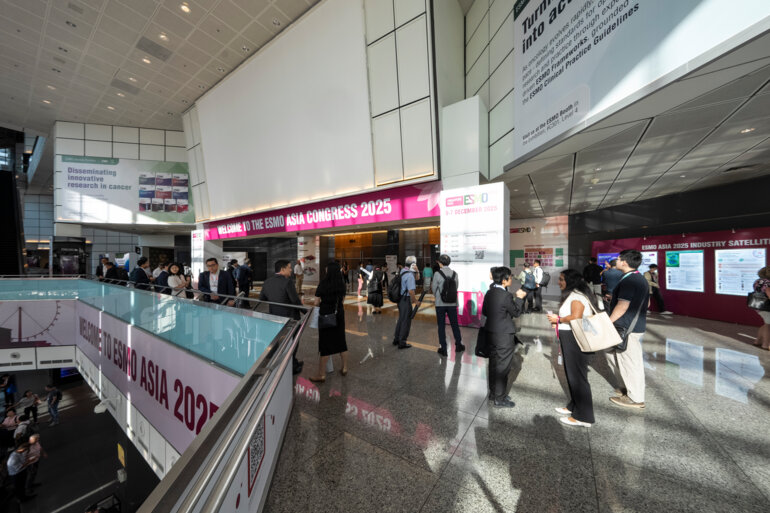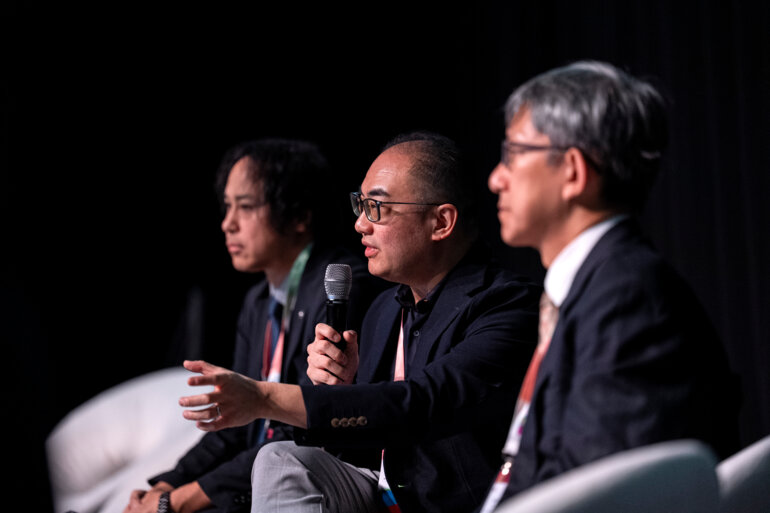Continued collaboration to identify new molecular targets and treatments can build on existing success
There is a lot of interest in the molecular characterisation of rare tumours – it can lead to the introduction of treatments to target particular molecular abnormalities, making a huge difference to patients’ quality of life and in some cases, prolonging survival. There are some excellent examples of these studies at the ESMO Sarcoma and Rare Cancers Congress 2023 (Lugano, 20–22 March), including the molecular profiling of sinonasal cancer by Hermsen et al. (Abstract 22O) and characterisation of well-differentiated neuroendocrine tumours (NETs) by Carretero-Puche et al. (Abstract 27O). Molecular investigations can also provide valuable information on predicted prognosis, as seen in a study of neuroendocrine neoplasms by Antón Pascual et al. (Abstract 34P), and on treatment response biomarkers in extra-pancreatic NETs as demonstrated by Lens-Pardo et al. (Abstract 28MO). Identification of patients who are more likely to benefit most from a specific treatment not only spares patients from the potential side effects of an ineffective treatment, but also helps in terms of health economics, especially with high-cost treatments.
We are seeing some powerful precision oncology success stories in rare tumours. One example is the recent US FDA approval of avapritinib, the first agent to demonstrate unequivocal antitumour activity in gastrointestinal stromal tumours with this multi-drug resistant PDGFRA D842V mutational subtype (Expert Rev Anticancer Ther. 2021;21:1081–1088). With the rapid advances in sequencing technologies, known and new drivers of oncogenesis continue to be discovered across a variety of cancers. Indeed, molecular characterisation studies highlight that these molecular abnormalities can be present across many tumour types. The response of diverse cancers harbouring oncogenic NTRK rearrangements to inhibition by agents, such as larotrectinib or entrectinib, provides an excellent model of how histology-independent activity of targeted therapy can be extremely effective (Nat Rev Clin Oncol. 2018;15:731–747). So, although relatively uncommon mutations might be identified in rare cancers, these findings may not be inconsequential when taken together.
Collaboration is key to making molecular characterisation studies happen. Indeed, the patient numbers needed for the identification of activating EZH2 mutations in Ewing sarcomas in a presentation by Sobczuk et al. was made possible by combining data from New York’s Memorial Sloan Kettering Cancer Center and Warsaw’s National Research Institute of Oncology (Abstract 47MO). Once the target and matched treatment have been identified, collaboration is also needed to initiate the clinical trials that are so important in taking the knowledge gained from molecular characterisation to the next step. Of course, when new treatments that are coupled to molecular testing are approved, cost and availability may be barriers for some healthcare systems, but it is important that we present and discuss molecular characterisation studies so we can plan to implement their findings as far as possible. Where specific treatments are not yet approved, there may be ways for them to be made available through a compassionate access programme or a clinical trial pathway.
One of the main aims of having meetings like the ESMO Sarcoma and Rare Cancers Congress is that they facilitate the interaction of basic scientists, clinical researchers, researchers, patient groups and pharmaceutical companies to identify new molecular entities and translate them for patient benefit.
Abstracts discussed:
Hermsen MA, et al. Sinonasal cancer: molecular biomarkers for tumor classification and targeted treatment. ESMO Sarcoma and Rare Cancers Congress 2023, Abstract 22O
Proffered Paper Session – Rare Cancers, 20.03.2023, h. 10:50 – 12:10, Hall B1
Carretero-Puche C, et al. Master gene regulation activity and methylation data reveals common patterns in well differentiated neuroendocrine tumors (NETs) from different tumor sites. ESMO Sarcoma and Rare Cancers Congress 2023, Abstract 27O
Proffered Paper Session – Rare Cancers, 20.03.2023, h. 10:50 – 12:10, Hall B1
Sobczuk P, et al. Activating EZH2 mutations define a new subset of aggressive Ewing sarcomas. ESMO Sarcoma and Rare Cancers Congress 2023, Abstract 47MO
Mini Oral Session, 22.03.2023, h. 09:00 – 10:00, Hall B3
Lens-Pardo A, et al. Predictive biomarkers of response to axitinib in patients with advanced EP-NETs enrolled in the AXINET trial (GETNE 1107): underlying molecular mechanisms. ESMO Sarcoma and Rare Cancers Congress 2023, Abstract 28MO
Mini Oral Session, 22.03.2023, h. 09:00 – 10:00, Hall B3
Antón Pascual B, et al. Genomic profiling of NEN patients: prognostic and therapeutic relevance. ESMO Sarcoma and Rare Cancers Congress 2023, Abstract 34P
Poster Display Session, 21.03.2023, h. 12:10 – 13:10, Foyer (Ground floor)






